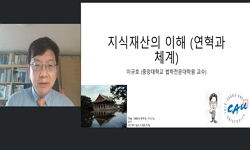- CONTENTS
- CHAPTER 1 INTRODUCTION = 1
- A. The Concept of Intellectual Property = 3
- B. The World Intellectual Property Organization (WIPO)
- (a) History = 4
다국어 입력
あ
ぁ
か
が
さ
ざ
た
だ
な
は
ば
ぱ
ま
や
ゃ
ら
わ
ゎ
ん
い
ぃ
き
ぎ
し
じ
ち
ぢ
に
ひ
び
ぴ
み
り
う
ぅ
く
ぐ
す
ず
つ
づ
っ
ぬ
ふ
ぶ
ぷ
む
ゆ
ゅ
る
え
ぇ
け
げ
せ
ぜ
て
で
ね
へ
べ
ぺ
め
れ
お
ぉ
こ
ご
そ
ぞ
と
ど
の
ほ
ぼ
ぽ
も
よ
ょ
ろ
を
ア
ァ
カ
サ
ザ
タ
ダ
ナ
ハ
バ
パ
マ
ヤ
ャ
ラ
ワ
ヮ
ン
イ
ィ
キ
ギ
シ
ジ
チ
ヂ
ニ
ヒ
ビ
ピ
ミ
リ
ウ
ゥ
ク
グ
ス
ズ
ツ
ヅ
ッ
ヌ
フ
ブ
プ
ム
ユ
ュ
ル
エ
ェ
ケ
ゲ
セ
ゼ
テ
デ
ヘ
ベ
ペ
メ
レ
オ
ォ
コ
ゴ
ソ
ゾ
ト
ド
ノ
ホ
ボ
ポ
モ
ヨ
ョ
ロ
ヲ
―
http://chineseinput.net/에서 pinyin(병음)방식으로 중국어를 변환할 수 있습니다.
변환된 중국어를 복사하여 사용하시면 됩니다.
예시)
- 中文 을 입력하시려면 zhongwen을 입력하시고 space를누르시면됩니다.
- 北京 을 입력하시려면 beijing을 입력하시고 space를 누르시면 됩니다.
А
Б
В
Г
Д
Е
Ё
Ж
З
И
Й
К
Л
М
Н
О
П
Р
С
Т
У
Ф
Х
Ц
Ч
Ш
Щ
Ъ
Ы
Ь
Э
Ю
Я
а
б
в
г
д
е
ё
ж
з
и
й
к
л
м
н
о
п
р
с
т
у
ф
х
ц
ч
ш
щ
ъ
ы
ь
э
ю
я
′
″
℃
Å
¢
£
¥
¤
℉
‰
$
%
F
₩
㎕
㎖
㎗
ℓ
㎘
㏄
㎣
㎤
㎥
㎦
㎙
㎚
㎛
㎜
㎝
㎞
㎟
㎠
㎡
㎢
㏊
㎍
㎎
㎏
㏏
㎈
㎉
㏈
㎧
㎨
㎰
㎱
㎲
㎳
㎴
㎵
㎶
㎷
㎸
㎹
㎀
㎁
㎂
㎃
㎄
㎺
㎻
㎽
㎾
㎿
㎐
㎑
㎒
㎓
㎔
Ω
㏀
㏁
㎊
㎋
㎌
㏖
㏅
㎭
㎮
㎯
㏛
㎩
㎪
㎫
㎬
㏝
㏐
㏓
㏃
㏉
㏜
㏆
https://www.riss.kr/link?id=M9664778
- 저자
-
발행사항
Geneva: WIPO, 1998
-
발행연도
1998
-
작성언어
영어
- 주제어
-
DDC
341.758 판사항(21)
-
ISBN
9280507567
-
자료형태
단행본(다권본)
-
서명/저자사항
Intellectual property reading material
-
판사항
2nd ed
-
형태사항
viii, 442 p.; 30 cm.
-
총서사항
WIPO Publication; 476
- 소장기관
-
0
상세조회 -
0
다운로드
부가정보
목차 (Table of Contents)
- CONTENTS
- CHAPTER 1 INTRODUCTION = 1
- A. The Concept of Intellectual Property = 3
- B. The World Intellectual Property Organization (WIPO)
- (a) History = 4
- (b) Structure = 6
- (c) Functions = 7
- (d) Administration = 7
- (e) Membership = 8
- CHAPTER 2 FIELDS OF INTELLECTUAL PROPERTY PROTECTION = 11
- A. Patents = 13
- (a) Introduction = 13
- (b) Conditions of Patentability = 14
- (c) Drafting and Filing a Patent Application = 18
- (d) Examination of a Patent Application = 20
- (e) Infringement = 24
- (f) Exploitation of the Patented Invention = 30
- (g) Compulsory Licenses = 31
- (h) Utility Models = 35
- B. Copyright and Neighboring Rights = 36
- (a) Introduction = 36
- (b) Copyright Protection = 36
- (c) Subject Matter of Copyright Protection = 38
- (d) Rights Comprised in Copyright = 39
- (e) Neighboring Rights = 42
- (f) Ownership of Copyright = 45
- (g) Limitations on Copyright Protection = 46
- (h) Piracy and Infringement = 47
- (i) Remedies = 49
- (j) Protection of Expressions of Folklore = 52
- C. Trademarks = 60
- (a) Introduction = 60
- (b) Definitions = 60
- (c) Signs Which May Serve as Trademarks = 63
- (d) Criteria of Protectability = 64
- (e) Protection of Trademark Rights = 70
- (f) Use Requirements = 70
- (g) Trademark Registration = 72
- (h) Removal of the Trademark from the Register = 76
- (i) Rights Arising from Trademark Registration = 77
- (j) Trademark Piracy, Counterfeiting and Imitation of Labels and Packaging = 83
- (k) Change of Ownership = 85
- (l) Trademark Licensing = 88
- (m) Trade Names = 89
- (n) Franchising = 91
- (o) Character Merchandising = 99
- D. Industrial Designs and Integrated Circuits = 106
- (a) Industrial Designs = 106
- (b) Integrated Circuits = 113
- E. Geographical Indications = 115
- (a) Introduction = 115
- (b) Protection of Geographical Indications on the National Level = 117
- (c) Protection of Geographical Indications on the International Level through Multilateral Treaties = 119
- (d) Protection of Geographical Indications on the International Level through the Provisions of Bilateral Agreements = 124
- F. Protection Against Unfair Competition = 124
- (a) Introduction = 124
- (b) The Need for Protection = 126
- (c) The Legal Basis for Protection = 127
- (d) The Acts of Unfair Competition = 130
- CHAPTER 3 THE ROLE OF INTELLECTUAL PROPERTY IN DEVELOPMENT AND WIPO'S DEVELOPMENT COOPERATION PROGRAM = 157
- A. Objectives of Developing Countries = 159
- B. Industrial Property and Development = 160
- (a) Industrial Property Protection and Development = 160
- (b) Inventions, Technology and Development = 162
- C. Licensing and the Transfer of Technology = 165
- (a) Introduction = 165
- (b) The Commercial Transfer and Acquisition of Technology = 165
- (c) Negotiation of Licensing Agreements = 172
- (d) Remuneration = 177
- (e) Types of Intellectual Property Licenses = 182
- (f) Government Control of Licensing Agreements = 186
- D. Copyright and Development = 189
- E. The Development Cooperation Program of WIPO = 190
- (a) Introduction = 190
- (b) Objectives = 190
- (c) Development Cooperation in Relation to Intellectual Property = 191
- (d) The WIPO Academy of Intellectual Property = 194
- (e) WIPO's Global Intellectual Property Information = 195
- CHAPTER 4 ENFORCEMENT OF INTELLECTUAL PROPERTY RIGHTS = 197
- A. Enforcement of Industrial Property Rights, Copyright and Neighboring Rights = 199
- (a) Introduction = 199
- (b) Enforcement of Industrial Property Rights in General = 200
- (c) Enforcement of Patent Rights = 203
- (d) Enforcement of Copyright and Neighboring Rights = 206
- (e) Activities Within WIPO Concerning Enforcement = 212
- (f) Enforcement Provisions of the TRIPS Agreement = 213
- B. Intellectual Property Litigation = 213
- (a) Introduction = 213
- (b) Review of Industrial Property Office Decisions = 213
- (c) Infringement Actions = 218
- (d) Remedies = 222
- C. Arbitration and Mediation of Intellectual Property Disputes = 224
- (a) Alternative Dispute Resolution = 224
- (b) Enforcement in the International Context = 225
- (c) The WIPO Arbitration and Mediation Center = 225
- CHAPTER 5 INTERNATIONAL TREATIES AND CONVENTIONS ON INTELLECTUAL PROPERTY = 229
- A. The Paris Convention for the Protection of Industrial Property = 233
- (a) History = 233
- (b) Principal Provisions = 234
- (c) Administrative and Financial Provisions = 252
- B. The Berne Convention for the Protection of Literary and Artistic Works = 255
- (a) History = 255
- (b) Principal Provisions = 255
- (c) The Latest (Paris) Act of the Convention = 258
- (d) Administration = 259
- (e) Developing Countries and the Berne Convention = 260
- C. The WIPO Copyright Treaty = 262
- (a) Introduction = 262
- (b) Legal Nature of the WCT and its Relationship with Other International Treaties = 263
- (c) Substantive Provisions of the WCT = 264
- (d) Administrative Provisions = 269
- D. The Patent Cooperation Treaty = 270
- (a) Introduction = 270
- (b) The Functioning of the PCT System = 272
- (c) Advantages of the PCT System276
- E. The Madrid Agreement Concerning the International Registration of Marks and the Protocol Relating to that Agreement = 279
- (a) Introduction = 279
- (b) The Functioning of the System of International Registration = 280
- (c) Becoming Party to the Agreement or Protocol = 284
- (d) Advantages of the System = 284
- F. The Hague Agreement Concerning the International Deposit of Industrial Designs = 285
- (a) Introduction = 285
- (b) The Principle of International Deposit = 285
- (c) Main Provisions of the Hague Agreement = 285
- (d) Benefits of Accession to the Hague Agreement = 287
- G. The Trademark Law Treaty = 288
- (a) Introduction = 288
- (b) Provisions of the Treaty = 288
- H. Conventions on Classification = 292
- (a) General Introduction = 292
- (b) The Strasbourg Agreement Concerning the International Patent Classification = 292
- (c) The Nice Agreement Concerning the International Classification of Goods and Services for the Purposes of the Registration of Marks = 295
- (d) The Vienna Agreement Establishing an international Classification of the Figurative Elements of Marks = 298
- (e) The Locarno Agreement Establishing an International Classification for Industrial Designs = 300
- I. Special Conventions in the Field of Neighboring Rights : The International Convention for the Protection of Performers, Producers of Phonograms and Broadcasting Organizations (the "Rome Convention") = 302
- (a) Introduction to the Rome Convention = 302
- (b) Relation Between the Protection of Neighboring Rights and Copyright = 303
- (c) Principal Provisions = 303
- (d) The Implementation of the Rome Convention = 306
- (e) The Rome Convention and Developing Countries = 307
- J. Related Special Conventions in the Field of Neighboring Rights = 308
- (a) The Other Special Conventions = 308
- (b) Reasons for and Purposes of the Special Conventions = 309
- (c) Main Features of the Special Conventions = 310
- (d) Substantive Provisions of the Phonograms Convention = 311
- (e) Substantive Provisions of the Satellites Convention = 311
- (f) The Phonograms and Satellites Conventions and Developing Countries = 312
- K. The WIPO Performance and Phonograms Treaty = 313
- (a) introduction = 313
- (b) Legal Nature of the WPPT and its Relationship with Other International Treaties = 313
- (c) Substantive Provisions of the WPPT = 314
- (d) Administrative Provisions = 319
- L. The International Convention for the Protection of New Varieties of Plants = 319
- (a) Introduction = 319
- (b) The International Union for the Protection of New Varieties of Plants (UPOV) = 320
- (c) The 1991 Act of the UPOV Committee = 324
- (d) Developments in Plant Variety Protection = 333
- M. The Agreement on Trade-Related Aspects of Intellectual Property Rights ("TRIPS") = 333
- (a) introduction = 333
- (b) General Provisions, Basic Principles and Final Provisions (Parts Ⅰ and Ⅶ) = 335
- (c) Standards Concerning the Availability, Scope and Use of Intellectual Property Rights (Part Ⅱ) = 337
- (d) Enforcement of Intellectual Property Rights (Part Ⅲ) = 344
- (e) Acquisition and Maintenance of Intellectual Property Rights and Related Procedures (Part Ⅳ) = 345
- (f) Dispute Prevention and Settlement (Part Ⅴ) = 345
- CHAPTER 6 ADMINISTRATION AND TEACHING OF INTELLECTUAL PROPERTY = 347
- A. Administration of Industrial Property = 349
- (a) Introduction = 349
- (b) Administrative Structure in the Industrial Property Office = 350
- (c) The Patent Office = 351
- (d) The Trademarks Office = 355
- (e) The Industrial Designs Office = 358
- (f) Intergovernmental Cooperation = 359
- B. Administration Of Copyright = 368
- (a) Infrastructure for the Implementation of Copyright = 368
- (b) Collective Management of Copyright = 373
- C. The Patent and Trademark Attorney = 385
- (a) Introduction = 385
- (b) The Functions of a Patent Agent = 386
- (c) Corporate Patent Attorneys = 397
- (d) Associations of Patent Agents = 399
- (e) The Functions of a Trademark Agent = 401
- (f) Skills and Knowledge of a Patent Agent = 407
- D. The Teaching of Intellectual Property Law = 408
- (a) Introduction = 408
- (b) Intellectual Property Teaching Programs = 409
- (c) Selecting Intellectual Property Courses = 411
- (d) Choosing Teaching Materials and Writing a Syllabus = 412
- (e) Teaching Methods and Educational Strategies = 415
- (f) The Role of Professors in the Legislative Process = 416
- (g) Research Institutes for Intellectual Property Law = 417
- (h) Conclusion = 418
- CHAPTER 7 TECHNOLOGICAL AND LEGAL DEVELOPMENTS IN INTELLECTUAL PROPERTY = 421
- A. Computer Programs = 423
- (a) Introduction = 423
- (b) Protection of Computer Programs under Copyright = 424
- (c) International Norms Concerning Copyright Protection of Computer Programs = 425
- (d) National Legislation on the Protection of Computer Programs = 425
- (e) Creation and Use of Works by Means of Computers = 427
- (f) Databases = 429
- B. Biotechnology = 430
- (a) Introduction = 430
- (b) Need for Protection = 431
- (c) Existing Protection = 432
- (d) Budapest Treaty on the International Recognition of the Deposit of Microorganisms for the Purposes of Patent Procedure = 433
- C. Reprography = 435
- (a) Reprography and Intellectual Property = 435
- (b) Audio and Video Recording = 436
- D. Communication Technologies = 437
- (a) Introduction = 437
- (b) Satellites = 437
- (c) Cable Distribution = 440
- E. Digital Distribution Systems = 441
- F. A Complementary Approach to the Development of Intellectual Property Law and Practice = 442
- �












